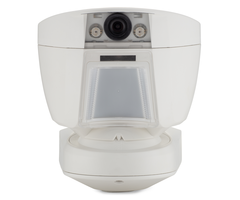PowerG Image Sensors


An image sensor is a somewhat unique combination device. It is includes both a camera and a PIR motion detection sensor. The motion sensor works by looking for changes in infrared energy that occur with movement. Whenever a substantial change in infrared energy is detected, the sensor will know to activate and start taking images through the built-in camera. Most PowerG Image Sensors produce a total of 10 images, but only one is sent to Alarm.com.
Once the image is received by Alarm.com, the end user will receive a notification from Alarm.com through text or email with the image. The user can then check the image to confirm if the potential break-in is legitimate or if it is a false alarm. This is particularly useful for users in verified response areas where used need to visually or audibly. The image will provide clear proof that someone has entered the building unlawfully.
Image sensors should be placed in careful locations so that they are less likely to cause false alarms. Remember that these devices work by checking for changes in infrared energy. Human and intruders are not the only sources of infrared energy. Anything that disrupts the device's field of view can potentially set off the sensor and cause unnecessary images to be sent out. This makes choosing a proper location for a motion sensor to be very important.
Things like flowing air, heavy sunlight or curtain or ceiling movement can all potentially activate an image sensor. Additionally, pets may also set off image sensors. But many offer pet immunity to prevent small animals from activating them. For example, the DSC PG9934P PowerG Image Sensor offers per immunity for small animals weighing up to 85 pounds. Mounting a motion sensor in a proper location is very important for avoiding activating by pets.
As PowerG devices these image sensors feature a very impressive wireless range and 128-bit AES encryption for added security. PowerG Sensors can communicate with a panel from up to 2km away in open air when used with certain systems. This advertised 2km range is mostly for DSC PowerSeries NEO Systems. When used with an IQ Panel 2 Plus System with a smaller antenna, the image sensor will only offer approximately 2,000 feet of range when used in open air. Keep this in mind when planning your system.
End users will also appreciate the 128-bit AES encryption that comes with PowerG Image Sensors. This makes these devices nearly impossible for others to hack or takeover. As a result, users can rest assured that their PowerG Image Sensors will always work reliably.
